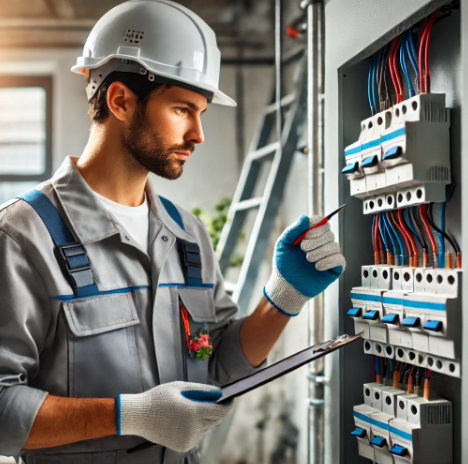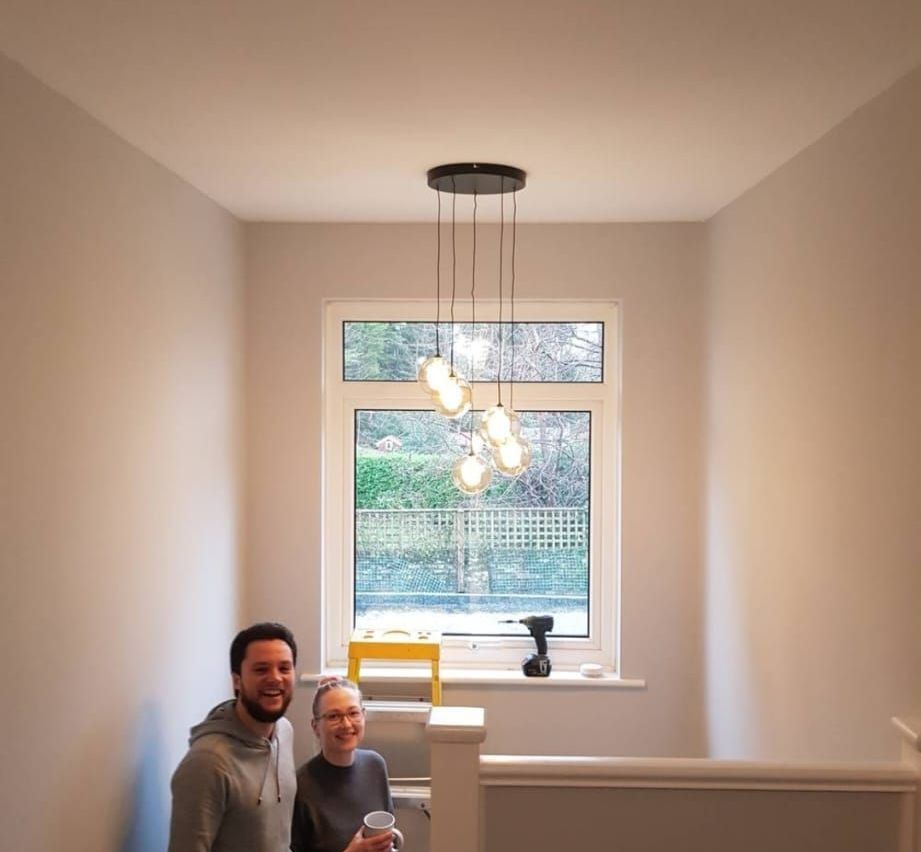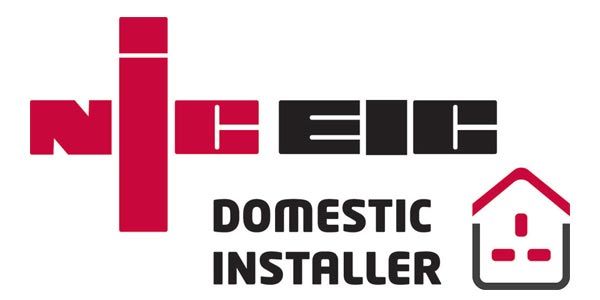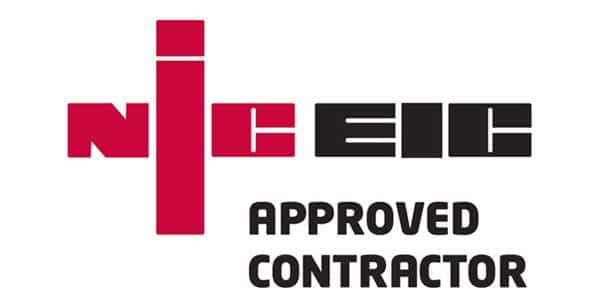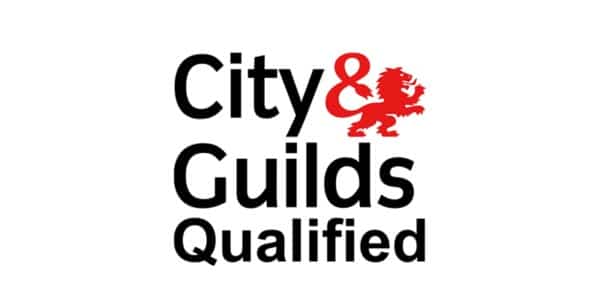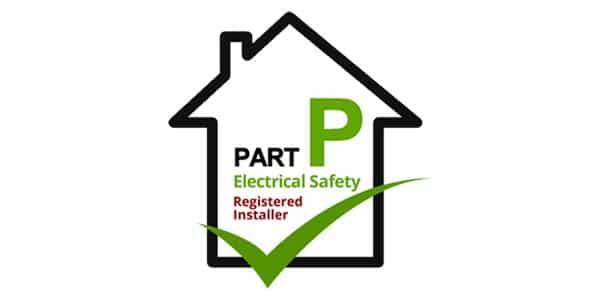Electrical Installation Condition Reports (EICR)
Electrical Installation Condition Reports (EICR)
Benefits of Electrical Installation Condition Reports (EICR):
✅ Ensures Electrical Safety
✅ Legal Compliance for Rental Properties
✅ Increases Property Value
✅ Provides peace of mind
✅ Reduces the Risk of Electrical Fires

It’s essential to ensure that the electrical systems are safe, reliable, and compliant with modern standards when purchasing a property. This is where an Electrical Installation Condition Report (EICR) becomes invaluable. An EICR provides detailed insights into the condition of the electrical installation when you are buying a home or renting a property.
But is it essential, and what are the consequences if you ignore it?
Contact Us
What is the Purpose of an EICR?
An EICR is a formal document issued after a comprehensive inspection of a property’s electrical installation. The primary objectives of an EICR are:
- Ensuring Safety: Verifies that the property’s electrical systems are free from hazards and safe to use.
- Regulatory Compliance: Confirms adherence to British Standard 7671 (18th Edition) and other relevant safety regulations.
- Identifying Defects: Highlights any faults, risks, or potential issues within the electrical system.
- Providing Recommendations: Suggests actions that are required to improve safety and performance.
Levels of Report:
The report categorises issues into different urgency levels:
- C1 (Danger Present): Immediate action is required to ensure safety. For example, exposed live parts or overheated wiring pose significant risks and must be addressed immediately.The issue must be rectified and this C1 means this item listed on the certificate will lead to an "Unsatisfactory" outcome on the EICR
- C2 (Potential Danger): Urgent remedial work is recommended to prevent the issue from escalating. For Example, damaged insulation or inadequate earthing systems.The issue must be rectified and this C2 means this item listed on the certificate will lead to an "Unsatisfactory" outcome on the EICR
- C3 (Improvement Recommended): Non-critical issues to enhance safety and compliance, such as outdated fixtures or missing labels."Observation and potential to break even further " C3 is a good to do as apposed to a have to do.
- F1 (Further Investigation): Additional checks are needed to clarify potential risks or differences observed during the inspection.
Reducing future risks and costs, an EICR ensures that buyers, sellers, and landlords can address electrical issues proactively.
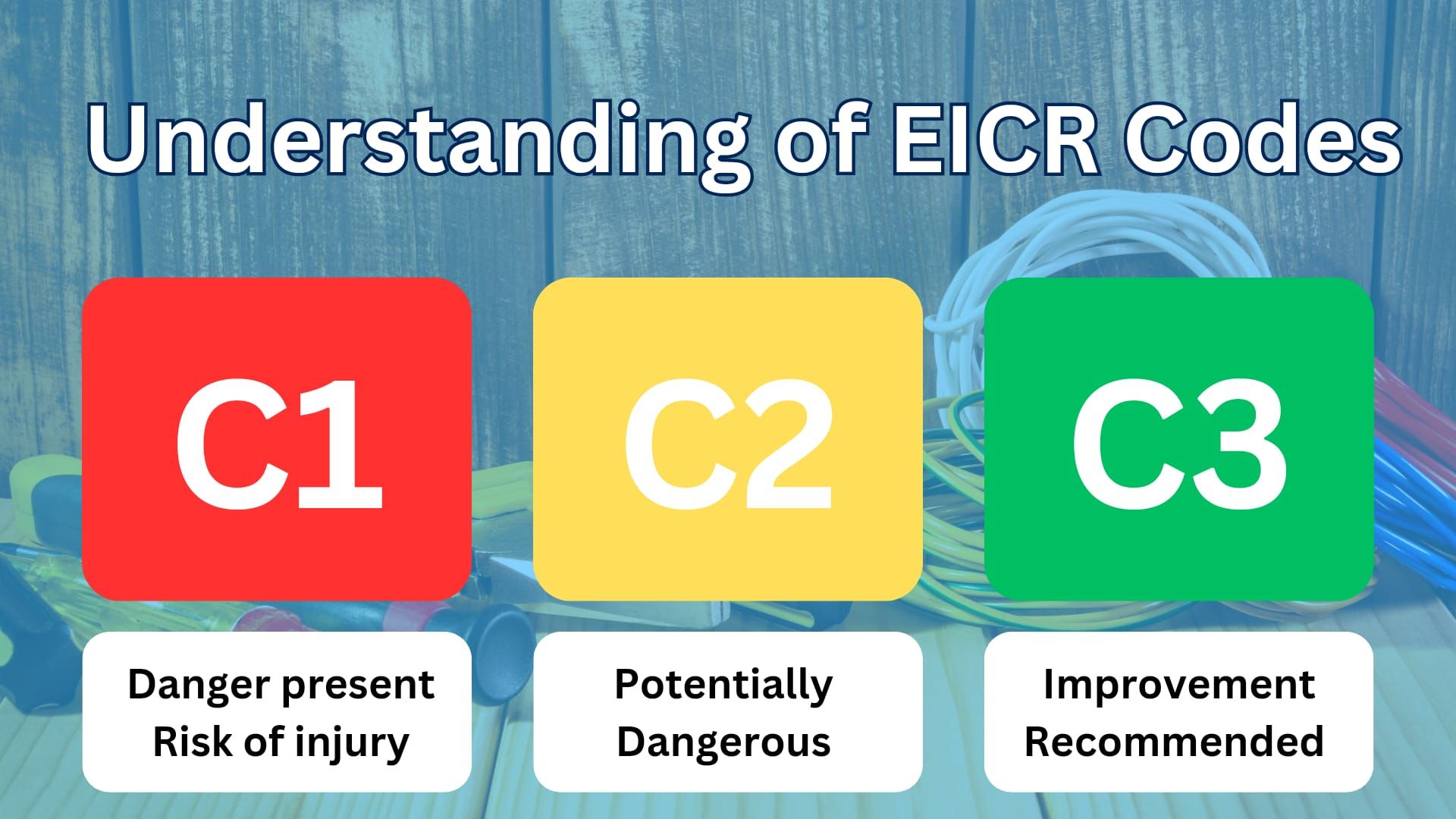
What Does an EICR Entail?
An EICR is a detailed evaluation of the property’s electrical systems. Here’s what the process includes:
Visual Inspection
The electrician begins with a visual inspection to identify any visible issues, such as:
Electrical Testing
A series of tests are carried out to assess the functionality and safety of the electrical system, including:
- Insulation Resistance Testing: Ensures no current leakage in the wiring.The wiring is tested for short circuits between Live and earth and between neutral and earth and between Neutral and lives.
- Earth Fault Loop Impedance Testing: Verifies the effectiveness of the earthing system.The readings have to be in tolerance for the particular earthing system - TNCS = -.35 Ohms / TT = 200 Ohms /TNS = 0.80 Ohms
- Polarity Testing: Confirms correct connections for wiring and switches.Ensures the Live is the live and the neutral is the neutral and the earth is the earth , sometimes dodgy electricians get these reversed , you would not believe it !
- RCD (Residual Current Device) Testing: Ensures the RCDs trip correctly to prevent electrical shocks and fires.
Documentation
After completing the inspection and tests, the electrician compiles a detailed report that includes:
- Identified issues and their urgency classifications (C1, C2, C3, or F1).
- Recommendations for repairs or improvements.
- A summary of the system’s overall condition.
The EICR serves as a vital document for buyers and landlords, providing clear insights into the electrical safety of the property.

Is an EICR a Legal Requirement When Buying a Property?
For Buyers:
An EICR is not legally required for homeowners purchasing a property. However, it’s highly recommended for several reasons:
- Safety Assurance: Ensures the property’s electrical systems are safe before occupancy.
- Avoiding Costs: Identifies potential issues that could lead to expensive repairs after purchase.
- Mortgage Lender Requirements: Some lenders may require an EICR as part of the approval process.
- Compliance with insurers
For Landlords:
For landlords, however, an EICR is a legal requirement. Since June 2020, landlords in the UK must:
- Renew the EICR every five years, or sooner if major electrical work is completed.
If you’re buying a newly constructed property, it should come with an Electrical Installation Certificate (EIC), eliminating the need for an EICR. However, for older properties or those with unknown electrical histories, an EICR is essential.
EICR and Buying a Rental Property
If you’re buying a property to rent out, an EICR is not just recommended, but legally required. Key points include:
- Pre-Tenancy Obligation: An EICR must be conducted before tenants move in.
- Ongoing Compliance: Periodic inspections are required every five years.
- Appliance Testing: Portable Appliance Testing (PAT) is recommended to ensure that any provided appliances are safe.
Landlords must maintain the electrical installation in good working order throughout the tenancy to comply with legal requirements and ensure tenant safety.

How Much Does an EICR Cost?
The cost of an EICR depends on several factors, such as:
- Property Size: Larger properties with more circuits require longer inspections.
- System Complexity: Older or non-standard electrical systems may need more time for evaluation.
- Location: Costs can vary by region.
Typical Price Ranges:
- Small properties: Small properties like flats can cost from £100 to £350.
- Larger properties: Large properties like Commercial or Industrial properties can cost £350 and upwards.
To ensure you get the best value:
- Check their credentials (e.g., NICEIC approval).
What Are the Benefits of an EICR?
An EICR offers numerous advantages, including:
Enhanced Safety
- Identifies and resolves safety hazards.
- Ensures the property complies with modern standards.
Financial Protection
- Prevents costly repairs by addressing issues early.
- Enables renegotiation of the property price based on findings.
Legal and Insurance Compliance
- Helps landlords meet legal obligations.
- Ensures home insurance remains valid, as some providers require an EICR.
Informed Decision-Making
- Provides a detailed understanding of the property’s condition.
- Prevents unpleasant surprises after purchase.
According to Electrical Safety First, the average cost of fixing electrical problems post-purchase is £1,704. An EICR helps buyers and landlords avoid such expenses.
Make the smart move by scheduling an EICR for your property today. Whether buying, selling, or renting, an EICR is an investment in safety, compliance, and peace of mind.
Contact Us
Book your EICR Today !
An Electrical Installation Condition Report (EICR) is essential for ensuring the safety and compliance of your property’s electrical systems. It helps identify potential hazards and offers recommendations for improvements, giving you peace of mind.
For landlords, it’s a legal requirement, while for homeowners, it can prevent costly repairs. Investing in an EICR ensures your property meets modern safety standards, protects your investment, and keeps occupants safe.
Are you looking for experienced professionals to run an EICR test on your property?




